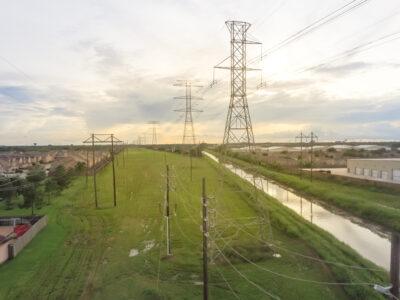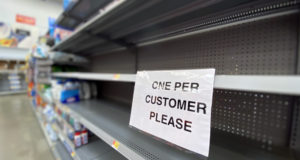
Power Outages Create Havoc.
The arctic blast of February 2021 has proved two things. The first is that the disasters of 2020 haven’t ended. Rather, January and February 2021 might as well be the 13th and 14th months of 2020. The end of the problems that many people were expecting hasn’t gone away. Sadly they seem to be increasing in magnitude, even if not in frequency.
While this isn’t the first time our country has been treated to unusually severe weather, it was unique in one thing… how it affected Texas. This once in 100 year weather event caused massive problems across the state and I had a front-row seat to watch it.
Texas is unique because it has its own electrical power grid. That was done intentionally, to avoid federal regulation. The authority for much of what the federal government’s regulatory agencies do comes from the interstate commerce clause, which gives those agencies and Congress an open door when business crosses state lines. But when the business is solely within one state, their ability to meddle and mandate is severely curtailed.
This is coming under scrutiny right now. Some are saying that this lack of federal oversight caused the blackouts in Texas. But then, there has been a lot of finger pointing going on, ever since the freeze started and ERCOT, the state’s grid operator, is the biggest target anyone can find.
But did ERCOT really mess up? That’s the question. Could they have prevented the mess in the first place?
The Loss of the Texas Grid
While much of what happened was due to freak weather and the decisions made in an instant, there are two things that were done by ERCOT’s board, before the freeze came, which added to the problem. The first was to move more towards renewable energy, specifically in the form of wind farms. Texas produces more wind power than any other state in the Union, accounting for 20% of the state’s electricity usage. This move is partly in line with national and even worldwide goals to “go green” and do away with fossil fuels, specifically coal. Roughly 48% of Texas electricity is now produced from natural gas, which fed into the problem as well.
The second decision that ERCOT’s board made, which fed into the problem, was that they adopted the strategy of maintaining a low level of reserve capacity, the lowest in the country. The plan was to buy electricity from neighboring states, should the need exceed the grid’s capacity to produce.
One last piece fits into setting up this puzzle; that of some power plants being down for scheduled maintenance, something that is normally done during the winter, because Texas used more electric power in the summer. So, when the cold weather hit, the margin between what was needed and what was being produced disappeared.
Be Ready For Any Emergency Situation With Dependable Backup Power
As cold weather moved in, home use of electricity increased, because of the need to heat homes. At the same time, wind turbines started having ice form on the blades, putting them out of balance. Wind turbines in Texas don’t have built-in de-icing systems, because of the low probability of freezing and rain together. So, in order to prevent damage, the control circuitry of those turbines took them offline, sending production below consumption. This was the beginning of the crisis.
Apparently ERCOT couldn’t rely on their backup plan, as other states were seeing increased electrical usage as well, because of those states experiencing unusually cold weather. It was necessary to institute rolling blackouts, the normal way of dealing with this situation. Unfortunately, perhaps due to lack of experience, that didn’t work out as it should have.
One of the big problems with the rolling blackouts, which really didn’t seem to be rolling, was that electric power was shut down for much of the Permian Basin. This included natural gas wells that were necessary to provide heat for homes and power plants. This caused a further reduction in electric power availability, as gas-fired power plants were stuck without enough fuel, causing some to go offline. A domino effect began, as the load required of remaining power plants increased. More and more went offline, as their safety systems kicked in.
At this point, ERCOT had to make some hard decisions and make them fast. According to a spokesperson, they were within minutes of the entire grid collapsing, with a prognosis of months to get it back online. This left millions of people without electricity for some of the coldest days in Texas history.
Cascading Problems
The next problem to occur was the loss of water, pretty much statewide. While there was still some water flowing, it was a trickle in most places. Water pipes are only buried about two feet below ground in Texas, because of the rarity of freezing weather. Some of these pipes froze, causing them to break. But that wasn’t as bad as all the pier and beam constructed homes, which had open pipes in the crawl spaces. This made it harder to get the water back online and some people are still without water a week later, waiting for the plumber to make repairs to their home’s pipes.

Purchase Necessities Before A Power Outage Hits.
But the bigger problem wasn’t broken pipes, it was the loss of pressure in municipal water systems. Unfortunately, caused by a lack of sufficient electrical power to keep them running. Almost the entire state was under a water boil advisory, due to low water pressure.
Water purification plants are required by regulation to have backup power and even backup to their backup. That’s a sensible precaution. But in the city where I live, all four diesel-powered generators, any of which should have been enough to keep the city’s water running, all went down. They haven’t figured out the reason all four failed at essentially the same time yet, but I suspect it’s because the diesel wasn’t treated for cold weather. Again, it’s not an issue here in Texas, so there’s no reason to treat it for the cold. Yet, when they break down those generators, I suspect they’ll find a lot of injectors blocked by paraffin.
Plant Your Own One Acre Survival Garden For Endless Food Supplies
With little water available, people rushed to the grocery store, buying them out of water on the first day. While stores tried to keep up shipping water in, there was never enough to meet the demand. Most people had to get by with minimal water for three to four days.
That brought about the next domino to fall, as people bought out the grocery stores again, just as they had in the beginning of the COVID-19 pandemic. Bare shelves abounded, as people were panic buying everything they could, just in case they needed it.
Finally, after all this, the temperature rose again. Which meant, after five days of freezing weather, Texans were back wearing T-shirts and turning their air conditioners on. Fortunately, ERCOT got things sorted out just in time for those air conditioners, or the whole thing could have come crashing down once again.
Avoiding the Cascade
One thing this whole scenario really pointed out was how easy it is for problems to cascade, growing with time; very little time. We all tend to look at disasters as isolated incidents; but they’re not. Even something as simple as a hurricane tends to cause cascading problems, but we lump it all together as a hurricane, not thinking of what the actual elements of the disaster entail for our survival.
Fortunately, most of us are preparing for some cataclysmic event, such as an EMP; so we’re ready to lose much of the infrastructure we depend on every day. But we should never forget that even something that seems like it really isn’t a major problem, like some unusually cold weather, can cause us to lose those things.
The other thing that’s fascinating about this particular disaster is the cascading nature of it. Everything that happened after the first loss of wind turbines was cascading effects. While the loss of water was a serious problem, it wouldn’t have happened, has not the grid encountered a situation where there was insufficient capacity.
Finally, this serves as an excellent example of how disasters grow. From what I’ve seen in the prepping community, we’re all expecting a sudden disaster that shuts everything down. Yet that’s not what happened in this case. While it all went down rather quickly, it took a day for that to happen. With that being the case, it could be very easy for any of us to not recognize a TEOTWAWKI event, just because it manifests through the same sort of cascading series of systems breaking down.
 Off The Grid News Better Ideas For Off The Grid Living
Off The Grid News Better Ideas For Off The Grid Living



